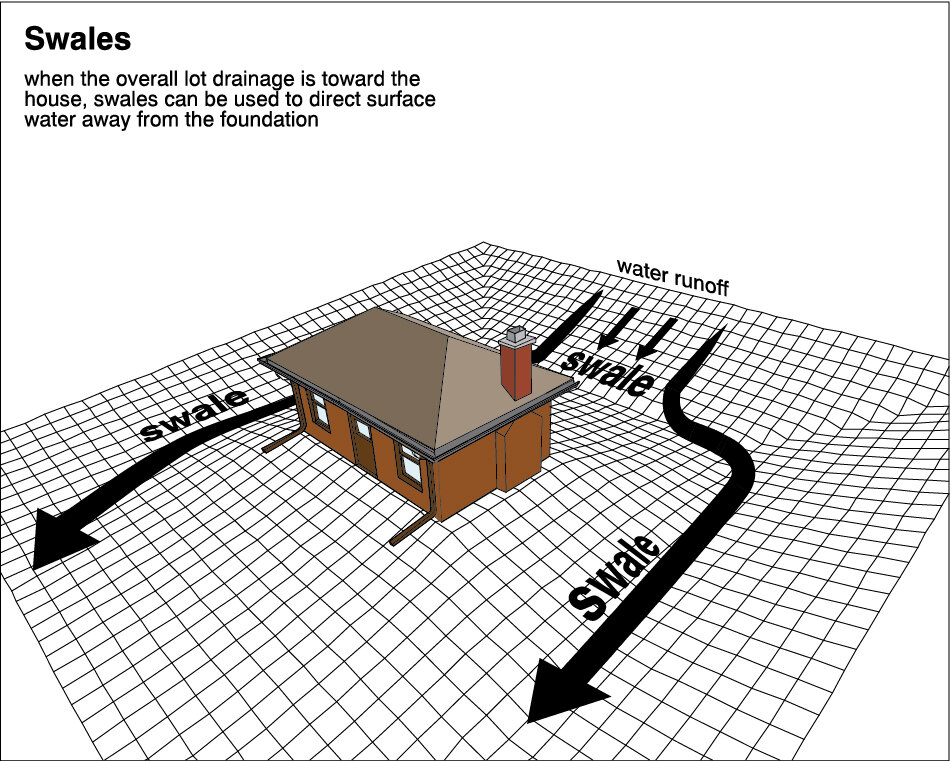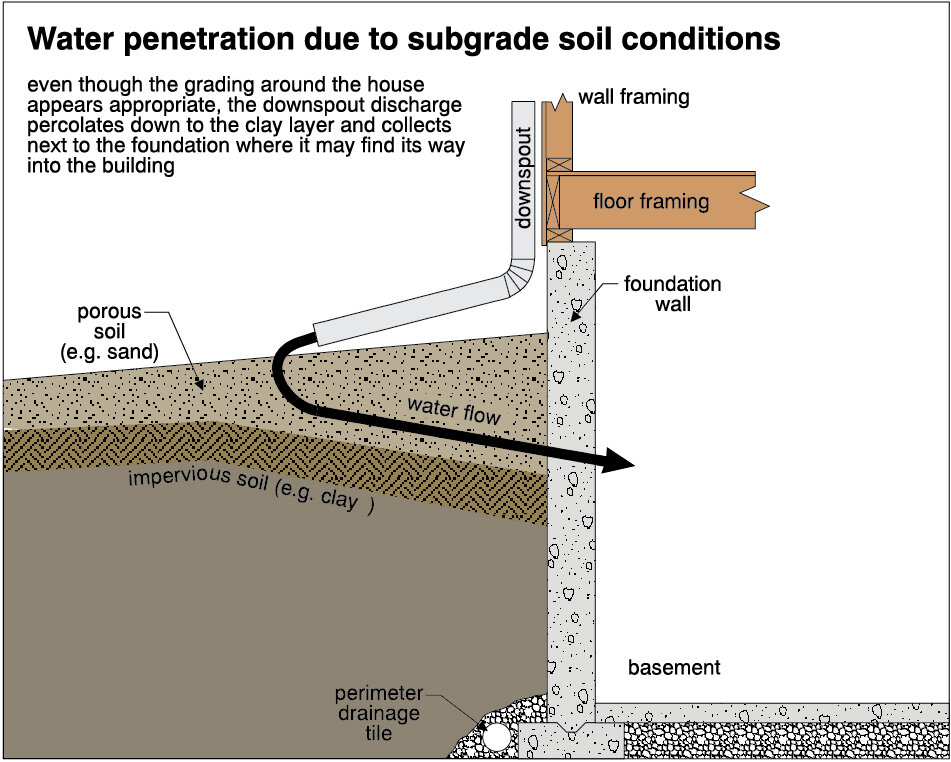Exterior: Grading & Water Management
Why is Grading So Important?
Keeping our houses dry is possibly THE most important maintenance concern for any homeowner, as the results of poor water control can have catastrophic results over the course of time on our foundations, basements, slabs, crawlspaces, and siding.
So, what can we do to keep our house as dry as possible?
Lots!
Here we are going to highlight the two most effective ways to control water.
Grading around the house and yard.
Gutters and downspouts.
Landscape grading (slope)
Typically we want a steady 6” decline within the first 10’ of the house (see photo)
This is the ideal, but depending on the situation, other methods, such as swales or physical barriers might be needed.
Swales
This is simply using the slope of our grading to guide the water to a safe runoff area. Swales are often used to guide water running off of a hillside or from between two closely situated houses.
Downspouts
The most common and easy to correct grading flaw is missing downspout extensions. The idea is very straight forward; direct the water from our gutters away from the house and foundation. Typically 6ft. is sufficient, but there are times where it may be necessary for even longer extensions.
Credit: This Old House
Sub Surface Grading problems
Sometimes the grading looks fine from the surface, but the water has a pathway back to the house once it seeps below the surface. A common example of this would be mulch that looks like it slopes away properly from the house, while the actual soil (grading) is negatively sloping underneath. This is a difficult issue to diagnose during a home inspection, so as always, monitor your water management, grading, basement moisture, etc. One solution that may help in some situations is adding a plastic sheeting under the landscaping around the perimeter of the house to physically stop the “memory” pathways that the water is taking. We recommend consulting with a qualified contractor to create a game-plan if you are tackling a tricky grading issue.




